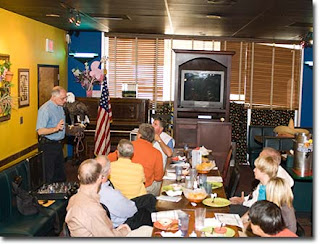
Yes, we have to. Today’s post focuses on a topic that no one really likes to talk about. It makes men uncomfortable and women anxious and apprehensive. The topic of the day is mammography.
Few women look forward to having the uncomfortable procedure, but for years women, beginning at age forty, have given in and started getting them annually. However, last fall, the
US Preventative Services Task Force (USPSTF), changed their
recommendations and said women didn’t have to start getting mammograms until age 50, and then only biennially.
Their decision sparked outcries from both sides of the issue. Many cancer groups, including the
American Cancer Society, vehemently disagreed with their new standards, while other groups, like the
National Breast Cancer Coalition, praised the decision, saying it will allow for focus on finding more effective methods of detection and prevent excessive treatment. The decision and backlash, overall, left many women not knowing what to do in their own lives.
The Coalition for Life Sciences held a briefing on Wednesday discussing this issue, and the speaker, Dr. Ann Partridge, MD, MPH, a clinical breast cancer researcher at The Dana-Farber Cancer Institute in Boston, explained how the decision was made, and what she thought women should do for themselves given this new information.
First, she discussed that the USPSTF had made its decision by reviewing the literature pertaining to mammograms given to women under age 50. The studies showed a slight improvement in mortality rates from breast cancer with annual testing from 39-49 but also greater discomfort, lower accuracy, and much higher false positive rate with the test in this age range. The studies also showed no discernible difference in mortality with biennial testing as compared to annual testing.
Given all the downsides, she said, the task force chose to stop recommending the procedure for women in this age group. However, she emphasized that this is a choice each woman needs to make with her doctor on a personal level. She should decide when to start getting mammograms and how often based on family history, possible risk, past health issues, and her own personal belief in the test.
No woman, Dr. Partridge confirmed, should feel like she cannot get the test if she wants it. It is a personal choice and the task force was merely saying that the risks might outweigh the benefits for women in their 40s, and that these women should make their own decision. So, women, talk to your doctor and make sure you understand these new standards, and make whatever decision is best for you.
One concern however, was that in some of the studies, even when assigned to the group to be tested annual, only 70% of the women got tested, meaning 30% did not. So if those who voluntarily sign up for studies don't get tested when they are told to, what does it mean for the rest of us? Will this more lenient recommendation severely lower the rate at which women get tested? Tell us what you think in the comments.



















